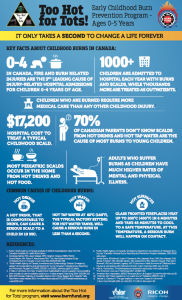Heat – whether flame or liquid – electricity and chemicals can all cause burn injuries. House fires are the main cause of deaths from fire burns but children are more likely to be hospitalized for burns after contact with steam or hot liquids (scalds), including tap water.
Children are at high risk for burns because their skin is thinner than an adult’s skin. For instance, young children’s bathwater should be no hotter than 38° C even though the recommended standard temperature for household hot water is 49° C.
A child’s skin burns four times more quickly and deeply than an adult’s at the same temperature.
Burns from fire
From 2010 to 2014, an average of 110 Canadians died yearly from burns suffered in a fire and 10 times that many people were hospitalized from fire-related injury yearly in the same time period.”
Source: Statistics Canada
Serious burns can have long-term consequences
- Burn victims often must have many skin grafts and may have to wear compression garments for up to two years.
- Many are left with disfigurement, permanent physical disability and emotional difficulties.
- Burns in children have the added complication that, because children continue to grow, they are likely to have scarring and contracting of the skin and underlying tissue as they heal.
Safety tips to reduce the likelihood of burns in your home
Smoke detectors save lives
The rate of fire-related deaths is 55 per cent lower in homes with functioning smoke detectors. Read Parachute’s tips on choosing the right kind of detectors for your home and how to maintain them.
Install home fire extinguishers
While fire extinguishers have limited ability to control a fire, and are not a substitute for calling the fire department, they can extinguish a small fire.
Make sure to install your extinguishers:
- In plain view
- Above the reach of children
- Near an exit route
- Away from stoves and heating appliances
Ideal locations for extinguishers:
- In the kitchen
- In the workshop
- Upstairs if you live in a multi-storey dwelling
- At the top of the basement stairwell
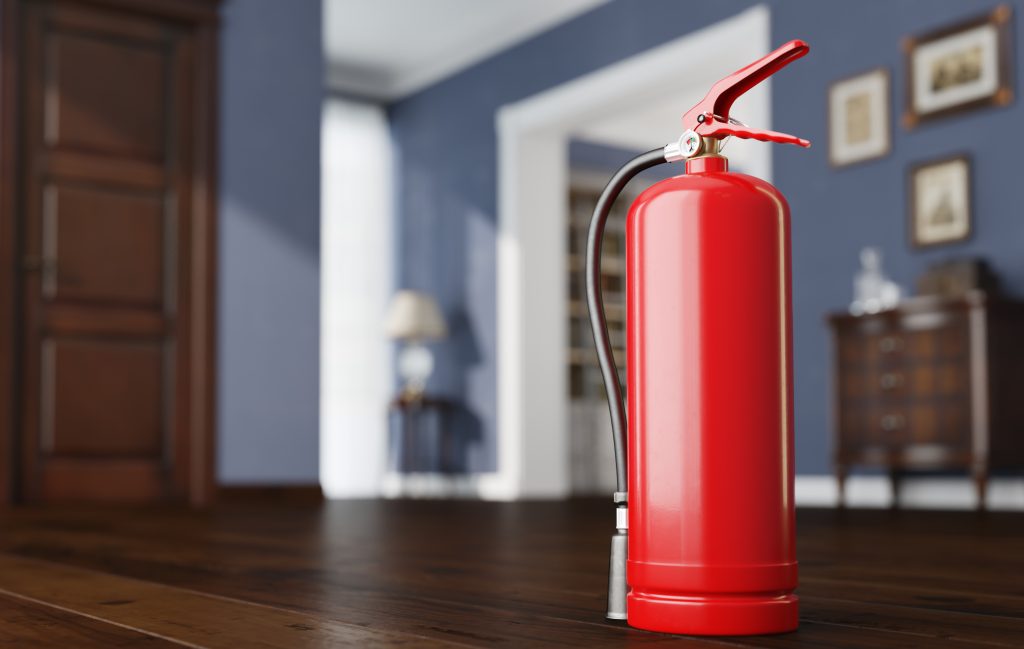
There are several varieties of extinguishers, each designed to fight a different kind of fire. Learn more about the kinds of extinguishers, how to operate them and their limitations through these tips provided by the City of Toronto.
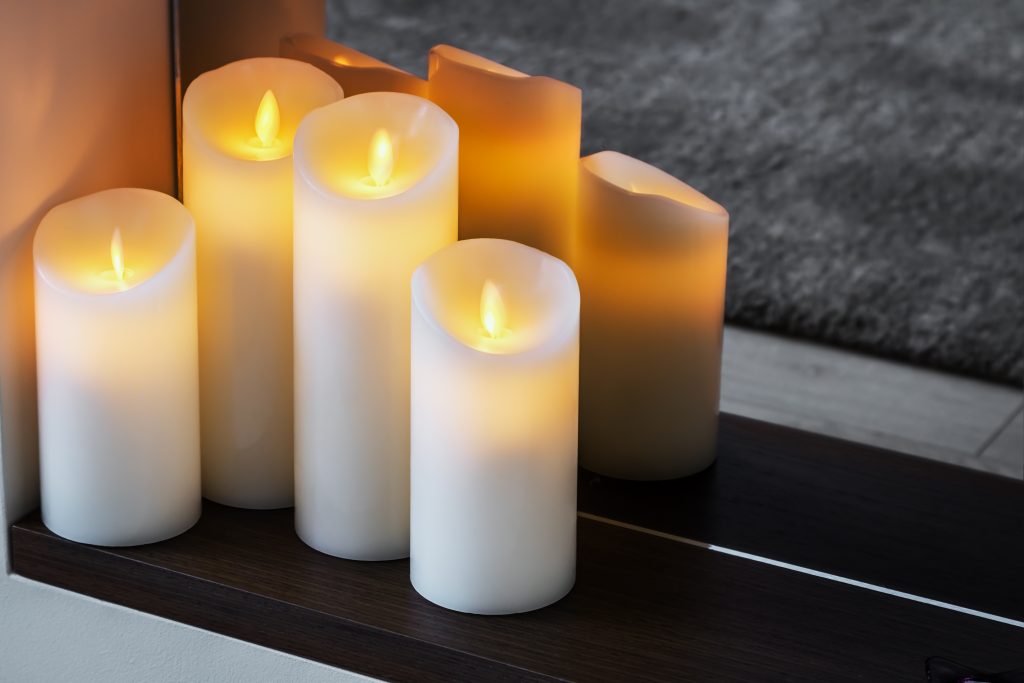
Consider not using candles
They are one of the most common causes of household fires. If you do use candles, place them in sturdy holders that aren’t likely to tip and place them away from any flammable materials, such as curtains or tablecloths. Remember to extinguish them when you leave the room. You can also use battery-operated flameless candles.
Hazards to manage if you have children in your home
Gas fireplaces
Keep your child away from gas fireplaces. The glass barrier on your gas fireplace can heat up to over 200 °C (400 °F) in about six minutes during use. It takes an average of 45 minutes for the fireplace to cool to a safe temperature after the fire is switched off.
Place a barrier around your gas fireplace. Install safety gates around the gas fireplace or at doorways to the room that has the fireplace. Young children under five years of age, and especially those under two years, are most at risk. When young children begin walking, they often fall. Hands and fingers are burned on the glass and metal parts of the door as young children raise their arms to stop their fall. Also, young children are attracted to the flames and want to touch them.
Supervise your child. Never leave a young child alone near a fireplace; they can be burned before, during and after use of the fireplace.
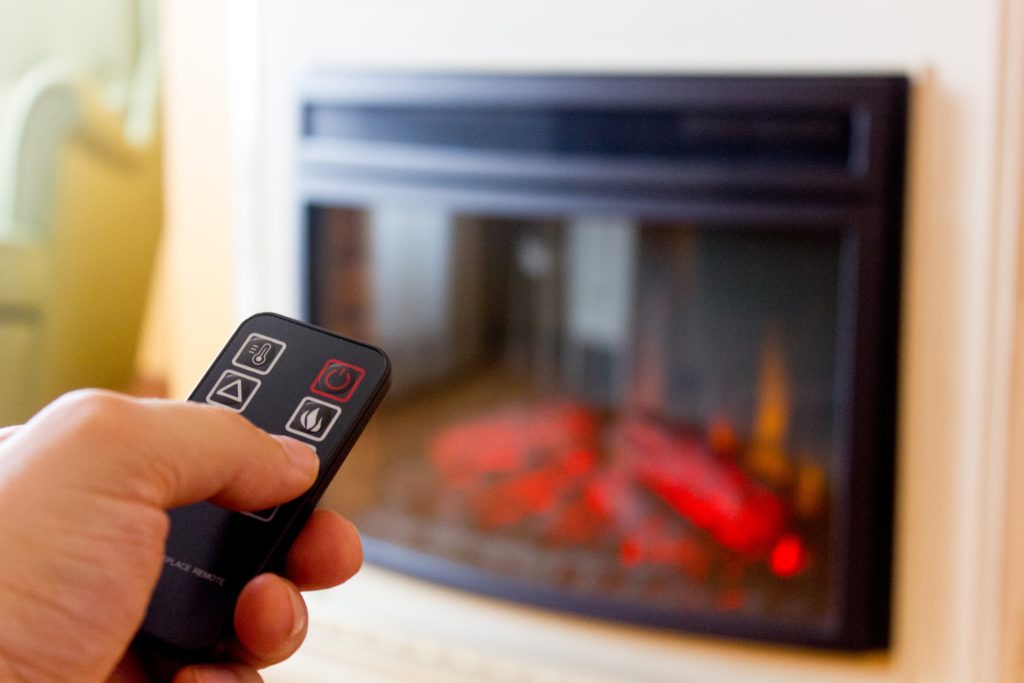
Teach children about the dangers of fire, and supervise. Teach your child the dangers of fire but teaching alone will not prevent your child from an injury. Young children, especially toddlers, may know a safety rule but will not necessarily follow it.
Lighters and matches
- Keep lighters and matches out of your child’s sight and reach.
- Use child-resistant lighters.
Protect your child from scalds
Hot water or other liquids can burn skin as badly as does fire and scalding is a particular risk to young children with their thin skin. In fact, young children under the age of five suffer 60 per cent of scald injuries seen in emergency departments. Here’s how to lower the risk of your child being scalded.
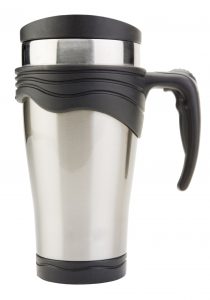
Keep your child away from hot liquids
Spilled tea, coffee, soup and hot tap water are the leading causes of this injury. Take extra care not to spill hot liquids while drinking or carrying them around your children.
Reduce the hot water temperature in your home to 49 °C (120 °F)
Hot tap water could seriously burn your child. Tap water causes nearly one-third of scald burns requiring hospitalization. Many Canadian homes have hot water set at 60 °C (140 °F). This can cause a third-degree burn on your child’s skin in just one second. For more information and how to check the hot water temperature, visit our page on hot tap water.
Keep your child safely out of the way when you are cooking
In a matter of seconds, hot liquids could fall on your child and burn them badly.
- Put your baby or toddler in a high chair or playpen to keep them away from the food preparation area, especially the stove.
- Make sure preschoolers stay seated at the kitchen table or out of the way while you are cooking.
- Use a safety gate to keep your children out of the kitchen when cooking.
- Cook on the back burners and turn the pot handles toward the back to prevent your child from being able to reach the pots and tip them.
Keep cords from your kettle and other appliances out of your child’s reach
Your child could pull at the cords hanging over the edge over the counter and scald themselves with hot water from the kettle.
